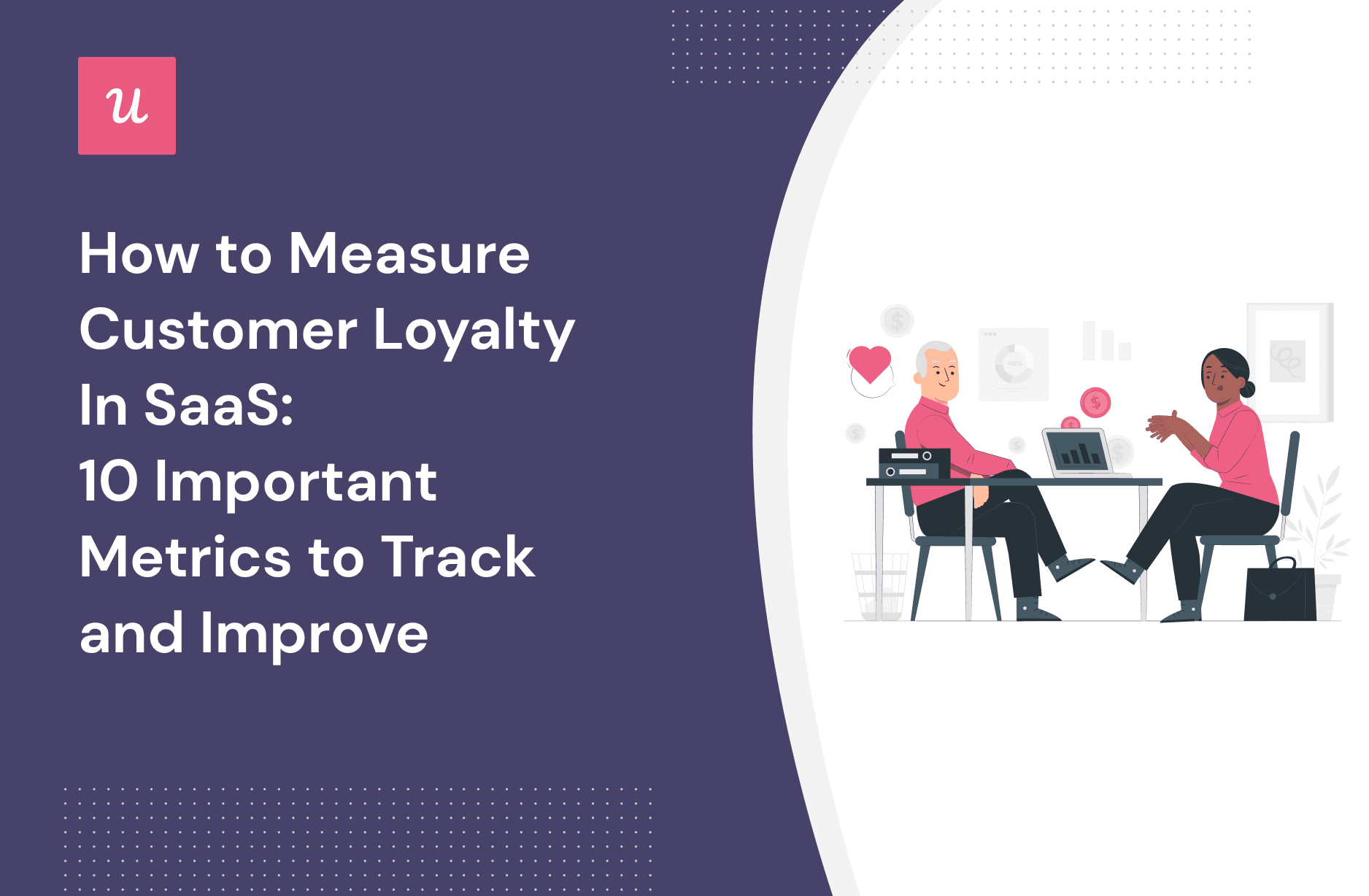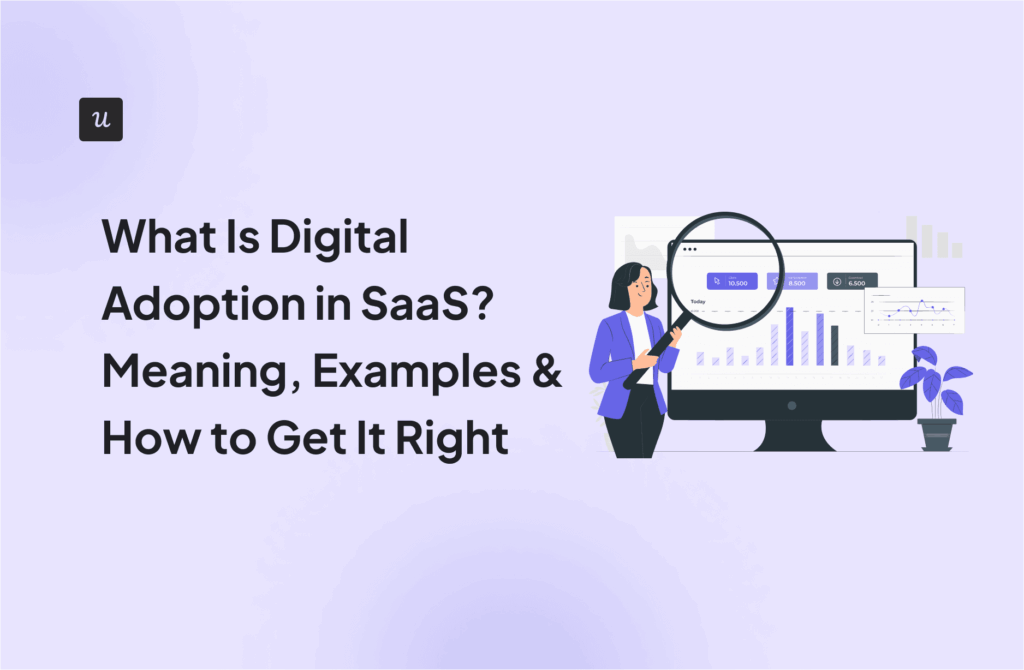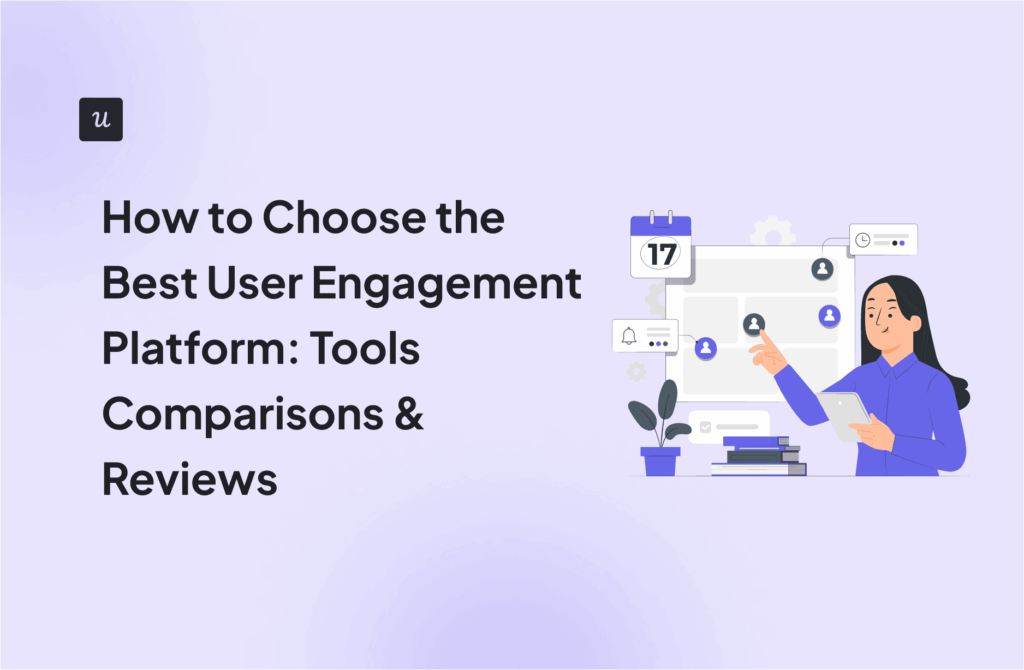
How to Measure Customer Loyalty In SaaS: 10 Important Metrics to Track and Improve
How do you measure customer loyalty?
Building loyalty is essential to retain customers, drive word-of-mouth, and nurture product growth. But since loyalty is more of a concept rather than a number, it might be confusing to think about ways to track it.
Thankfully, there are metrics you can use to expand your field of view and estimate how loyal your customers are.
But first, let’s talk about what customer loyalty is:
Try Userpilot Now
See Why 1,000+ Teams Choose Userpilot

What is customer loyalty?
Customer loyalty is an emotional bond between a brand and its customer that makes them consistently do business with a particular brand and recommend it to other potential customers.
Loyal customers don’t go about searching for alternative solutions, tend to be patient when technical issues occur, and can happily provide feedback if you ask—they’re your best customers.
Customer loyalty vs. customer advocacy
Although customer advocacy and customer loyalty are closely related concepts, they’re not the same.
Loyalty is a purchasing behavior. Loyal customers will return to your brand, make repeat purchases and continue to choose your business over competitors.
On the other hand, advocacy is an emotional connection, as an advocate will promote your brand on your behalf and generate word-of-mouth referrals for your business.
Advocacy comes after customer loyalty. This means loyal customers might purchase many upgrades, but they don’t always become advocates. Whereas advocates need to become loyal customers first.
10 metrics to measure customer loyalty
Now, let’s cover ten customer loyalty metrics that will help you watch how your loyalty levels improve (or worsen) over time—and act.
Net Promoter Score system
The Net Promoter Score (NPS) is a CX metric to track customer loyalty by asking users how likely they are to recommend your product or service to others on a scale of 0 to 10. Where 0 means “Not Likely” and 10 means “Extremely Likely.”
Users that answer 9 or 10 are considered promoters—a.k.a loyal customers. Scores 7 and 8 are passives. Those that choose these scores are happy with your tool but not sure they want to recommend it.
Detractors, on the other hand, are those user segments that choose 6 or below. They aren’t likely to spread the word about you and tend to be dissatisfied customers on the brink of churn.
When calculating NPS, you’ll get a score of -100 to 100. In SaaS, the average score is 41, and anything above 50 is a great indicator of loyalty.

With Userpilot’s native mobile SDK, you can trigger these NPS surveys directly within your mobile app, effortlessly gathering valuable user insights on the go.
Customer loyalty index
If you didn’t know, there is a customer loyalty metric called the customer loyalty index (CLI).
CLI surveys ask customers how likely they are to 1) Recommend your brand, 2) Buy again, or 3) Try another product from your company. From a scale of 1 (most likely) to 6 (not likely)—just like in the image below.
The final score is calculated as the average of all three scores. And it’s translated to a range from 0 to 100 (1 being 100, and 6 being 0).

Customer engagement score
Customer engagement score (CES) is a key metric that measures how engaged your existing users are. Each engagement with your product is reflected through a score based on action or inaction.
CES is worth measuring customer loyalty with because most loyal customers score higher than unhealthy and disengaged customers.
To calculate it, you must first add the events that matter, assign a score to each of them, and sum them up following this formula:

Customer churn rate
Customer churn refers to the number of customers who stopped paying or using your product/service over a specific period.
Churn and retention are inversely correlated. This means that the lower your churn rate, the better your customer loyalty is.
To calculate it, divide the number of churned customers within a specific period by the total number of customers present at the start of that period, and multiply the ratio by 100—as shown in the image below.

Customer retention rate
Customer retention is a company’s ability to keep doing business with customers continuously.
Retention is a good indicator of loyalty as it means customers are satisfied with your product or service and will prefer making repeat purchases with them over switching to a competitor.
You can calculate it with the following formula:

Customer lifetime value
Customer lifetime value (LTV) is the total revenue an average customer generates over the average customer lifespan.
LTV is an indispensable metric in SaaS because it connects retention with revenue. And it’s a great indicator of customer loyalty, too, as it gives you a benchmark on how much income you’re getting per user and determines if you need to invest in building loyalty.
Here’s how to calculate customer lifetime value:

Upsell ratio
The upselling ratio is a metric that compares the volume of customers who purchase multiple products/services with the ones who buy only one product.
Loyal customers tend to explore and buy more than one product offered by a business.
Expansion MRR rate
Expansion MRR is the extra monthly revenue you get from existing customers. And it’s as essential for customer loyalty as lifetime value (especially in SaaS) since you can determine how many upsells your customers are purchasing—which is an indicator of loyalty.
The expansion MRR rate is calculated by subtracting your expansion MRR at the beginning of the month from what you have at the end of the month. Divide the result by the expansion MRR at the beginning of the month, then multiply it by 100 to get the percentage.

Repeat purchase rate (RPR)
Repeat purchase rate (RPR) is the percentage of repeat customers.
You calculate RPR like any percentage, dividing the volume of customers who made multiple purchases within a timeframe by the total number of customers and then multiplying it by 100.
Although repeat purchase doesn’t always indicate loyalty, this metric is useful as it’s definitely easier to build loyalty with repeat customers—allowing you to identify if you’re on the right track.
Word-of-mouth reviews
Although you can’t accurately track word-of-mouth, keeping an eye on how many prospects are coming from WOM can give you an idea of how profitable your customer loyalty strategy has been.
For example, you can ask new users about where they first heard about your brand and track how many of them selected “recommended by a friend.” You can also do some social listening and find people who are actively sharing your product with their network or claiming that they had a friend who recommended it to them.
You can even check review sites like G2 or Capterra and see how many users are actively recommending your product. As well as taking a peek at the number of people who found those reviews helpful and if they added any comments.

How to improve customer loyalty
Once you measure customer loyalty, you might find that your brand isn’t generating enough loyalty around it. So what do you do?
Well, here are some of our go-to tactics to improve loyalty—either directly or indirectly.
Personalize customer experiences according to user needs
Offering a personalized product experience demonstrates that you care and understand your customer’s needs—which helps to build trust.
To do this, you first need to collect customer data. You can, for example, use a simple form or a welcome screen after the user has signed up.
Once you’ve collected data about your user’s goals, use cases, and expectations, you can create user segments and personalize in-app interactions such as:
- Onboarding flows with dedicated checklists and walkthroughs.
- Tooltips for introducing relevant features based on the journey stage.
- Emails to dissatisfied customers.

Run customer loyalty programs and reward loyal customers
A loyalty program helps reinforce positive relationships and encourage loyalty through compelling rewards such as limited deals, discounts, credits, etc.
There are different types of loyalty programs. The most common loyalty programs are either:
- Point-based, where users gain points for completing tasks and later exchanging those for premium services.
- Referral-driven, so users get rewarded for bringing more customers to your brand.
For example, Evernote’s point-based program rewards you with points for inviting friends and completing certain actions. Your friends get premium access when they sign up, and you get points that you can exchange for a premium plan.

Celebrate customer success
With UX gamification and emotional design, you can add elements such as badges, points, and levels for a more fun product experience.
Celebrating milestones not only reduces the friction to adopt your product, but it also encourages loyalty, as it motivates users to engage with your product and stick around.
For example, here’s how Calendly celebrates when you schedule your meeting:

Provide great customer service with an on-demand resource center
Too much friction in your service in the product experience will hurt customer loyalty.
Simply put, customers don’t enjoy waiting in line to get support, and we’re sure your customer service agents are not looking forward to responding to the same questions over again.
As a win-win solution, create and organize self-help resources in an in-app knowledge base. Including diverse content formats such as articles, video tutorials, and webinars ensures every person will find support in a way that works for them.
When users know they can find answers in a few clicks, customer satisfaction and loyalty will arise.

Drive repeated value by announcing new features
SaaS companies are always evolving their product and adding new products to stay competitive.
But with so many changes, users usually become feature-blind. They’ll stick to their routine work and easily miss out when new tools are launched.
So, what’s the point of implementing new features and keeping the brand competitive if your customers won’t engage with them?
To alleviate this, it’s a good idea to announce updates regularly, so customers are encouraged to adopt new features and stay loyal to your brand.
You can use a modal to communicate big release notes and major feature announcements. Or an in-app tooltip if you don’t want to be too intrusive. In the end, great communication will foster customer loyalty.

Send payment reminders to prevent involuntary churn
Sometimes, customers can’t keep using your service for reasons outside their control.
It happens mostly due to payment processing issues, such as expired credit cards, subscription renewals with manual payments, and so on.
One way to prevent involuntary churn is to trigger a payment reminder or a failed payment notification when the subscription renewal date is closed.
But don’t limit yourself to sending an email. You can also use in-app messaging through banners or push notifications to let your users know that they need to check on their payment method.

Identify at-risk customers with behavioral analytics and retain them
Yes, converting disengaged customers into advocates is possible—given you follow the right strategy.
For this, look into your analytics and check product usage patterns such as completed events, interacted features, and visited pages:
When checking user behavior for each of your user segments, you might identify “at-risk” customers who are likely to churn.
For example, maybe a user hasn’t discovered a key feature of your product because they skipped the onboarding checklist (thus, you could send them an email to encourage them to use it). Or perhaps it’s not one but an entire group of active users who are ignoring a key feature (then you could trigger an in-app tooltip on them and improve your onboarding process for future users).
If they’re particular customers, you can reach them personally, ask some questions, and try to help them with their goals. And if it’s one specific group, you can survey them and provide a personalized experience from their feedback.

Take customer feedback seriously and act upon it
You need to collect feedback to understand how your customers feel about your brand and do your best to satisfy them.
Thankfully, you can trigger in-app surveys at different touchpoints to measure how your customers feel across the customer’s journey and find opportunities for improvement.
For example, you can use a customer engagement tool like Userpilot (shown below) to send a satisfaction survey (CSAT) when a customer interacts with the support team. Or a customer effort score (CES) survey when a customer engages with a feature.
But it doesn’t stop there. To make sure your customers feel heard and cultivate loyalty, you must close the feedback loop by acting on it. For example, implementing a highly-requested feature, solving a common bug, integrating your product with other apps, and so on.
Only then, your customers will start trusting you and become loyal.

Wrapping up
Customer loyalty is not easy to come by, but the returns are worth it (when done well.)
With these ten metrics to measure customer loyalty, you can gauge how much you should invest in growing your number of loyal customers and spot opportunities for improvement.
Thankfully, no-code tools like Userpilot can help you send NPS surveys and personalize your product experience. So why don’t you book a Userpilot demo to build loyalty without relying on your dev team?






